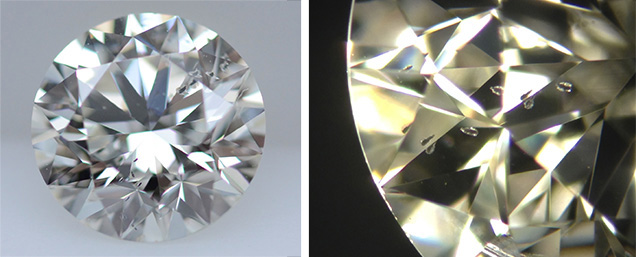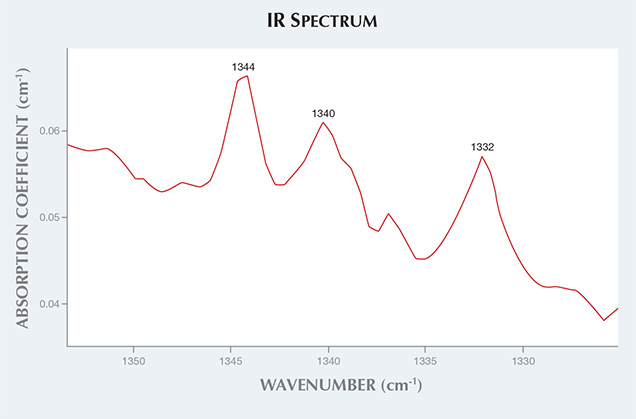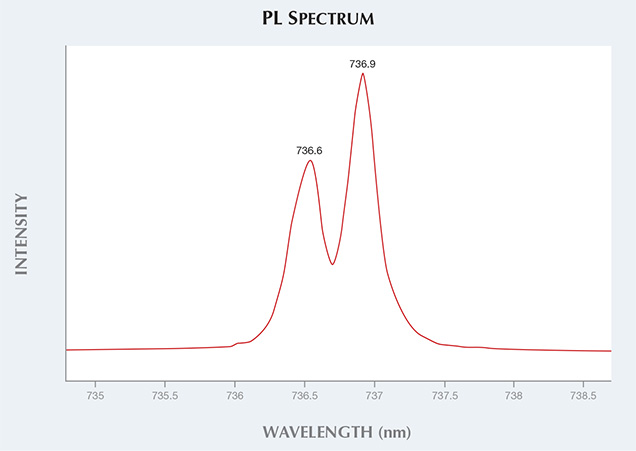Round CVD Synthetic Diamond Over 1 Ct Identified in Hong Kong Lab

Recently, a round-brilliant specimen, identified as a CVD synthetic diamond, was submitted to the Hong Kong laboratory for grading service. It weighed 1.20 ct (6.70 × 6.72 × 4.30 mm), with a color grade of L, a clarity grade of SI2, and a cut grade of Very Good. This specimen resembled well-cut natural round diamonds (figure 1, left), with a few black inclusions of irregular shape clearly observable under the microscope (figure 1, right).

Figure 2. The CVD synthetic diamond’s infrared absorption spectrum showed a weak peak at 1344 cm–1. This feature, attributed to the isolated nitrogen impurity, was responsible for the L color grade.
Infrared absorption spectroscopy identified it as type IIa. A very weak absorption at 1344 cm–1 was attributed to isolated nitrogen in the diamond lattice (figure 2). Based on the absorption intensity (0.014 cm–1) of this peak, the total concentration of isolated nitrogen was well below 1 ppm. Occurrence of trace isolated nitrogen was the major optical center responsible for the L color observed. No hydrogen-related absorption was observed at either 3107 or 3123 cm–1 using infrared absorption spectroscopy. Photoluminescence (PL) spectra at liquid nitrogen temperature with 532 nm laser excitation showed the [Si-V]– doublet emissions at 736.6 and 736.9 nm (figure 3), a characteristic feature of CVD synthetic diamond. Weak emissions from N-V centers at 575.0 nm and 637.0 nm were also recorded. Fluorescence images collected using the DiamondView showed green fluorescence with characteristic CVD growth striations (figure 4). All these gemological and spectroscopic observations, very similar to those of Gemesis specimens (Wang et al., 2012), confirmed this was a CVD synthetic diamond. It was annealed at high pressure and high temperature (HPHT) to improve its color appearance.
Figure 3. A photoluminescence spectrum collected at liquid nitrogen temperature using 532 nm laser excitation revealed a strong emission doublet at 735.6 and 735.9 nm, indicating a [Si-V]– optical center.

Figure 4. Observed in the DiamondView, the 6.7 mm synthetic diamond showed typical
striations indicative of CVD growth. Image by Carmen Lo.
As this sample shows, CVD technology has reached a new milestone, with the growth of crystals thick enough to consistently cut well-proportioned round brilliants. It is highly likely that we will see more gem-quality CVD synthetic diamonds over 1 ct in the trade.
striations indicative of CVD growth. Image by Carmen Lo.



